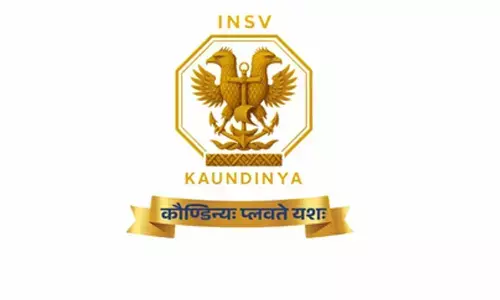State-owned banks need to reinvent lending capabilities

The marked drop thus comes from State-owned banks, which have greater muscle in the interiors of the economy. Moreover, the recent tendency to go slow on lending to the large sector due to accumulated non-performing assets (NPAs) has added to the trend. With all banks looking at retail to grow, there is a tendency to chase the same target group of potential borrowers. But, sectoral diversification
With the economy entering the critical phase of growth towards the end of the second quarter and onwards during the current fiscal, traditionally known as a ‘busy season’, the flow of bank credit to different sectors holds significance. But bank lending has slowed down from 16.3 per cent to 10 per cent during the last 15 months, though private sector banks were continuing to record a credit growth of close to 20 per cent.
The marked drop thus comes from State-owned banks, which have greater muscle in the interiors of the economy. Moreover, the recent tendency to go slow on lending to the large sector due to accumulated non-performing assets (NPAs) has added to the trend. With all banks looking at retail to grow, there is a tendency to chase the same target group of potential borrowers. But, sectoral diversification of credit allocation is needed to support the growth.
Now is the time for banks to look at lending to agriculture and micro, small and medium enterprises (MSMEs), the two key drivers of growth. During the same period, credit flow to agriculture has come down from 14.8 per cent to 13.4 per cent and to industry down from 12.3 per cent to 0.6 per cent. Renewed scope for lending to agriculture and MSME is opening up in a big way for banks to harp on.
The economy is set to be steadfast on its inflation targeting at four per cent with plus or minus two per cent. With consumer price index (CPI) at 6.07 per cent in July 2016, it is too close to target, which leaves little scope for further moderating the interest rates.
Having already front-loaded the rate cuts, the Reserve Bank of India (RBI) now expects the banks to transmit lower interest rates, which is still a work in progress. But with agriculture and food prices set to cool off during Q2 onwards due to good monsoon, it may open up a window of rate cuts at a later stage of the fiscal.
Latest data indicates that gross domestic product (GDP) of Q1 of FY17 is down to 7.1 per cent as against 7.9 per cent in Q4 and 7.5 per cent of Q1 of FY16. Among the worrying factors is the drop in agriculture growth to 1.8 per cent as against the expectation of 2.2 per cent and 2.6 per cent recorded in the corresponding period of last year.Similar is the drop in the gross capital formation. Private investment and its capital expenditure need to be revived to lend support to the growth dynamics.
Agriculture growth in FY17 is expected to be better. It can lend substantial support to boost the economy and the Pay Commission may provide scope for greater consumption-led demand for growth. Moreover, manufacturing and electricity and other utilities have registered an uptick. Global investment climate is becoming more favorable.
India has received $5.7 billion of foreign institutional investment between January and August, recording an annualised 93 per cent rise, as compared with $4.5 billion received during the full calendar year 2015. Thus, India is one of several Asian economies that have become the focus of attention for the international investment community.
Similarly, external commercial borrowings (ECB) had attracted $17.1 billion so far during FY16, as against $16.4 billion received during the same period in the previous year.
The foreign direct investment (FDI) inflows worked out to $55 billion in 2016 (in the first seven months), which is a lot more than $44 billion in the full year2015 and $35 billion in 2014. The passage of GST has had a positive impact on the overseas investment climate.
In a bank-led economy, flow of credit to different sectors of the economy can step up growth. Thus, State-owned banks have to reinvent their capabilities to lend and cannot opt to slow down credit growth under the weight of surging NPAs, while the large borrower segment/corporate sector having robust capabilities, better credit history and rating records can access funds from the bond markets that are set to expand.
But, other employment-intensive medium sector industries and the agriculture sector have limited option in accessing credit. For these critical sectors, bank credit is perhaps the only source of funds. With intensive financial inclusion efforts and new banks opening up in the hinterland, banks need to look back at the rural economy for growing credit.
Linking the masses with deposit accounts, insurance and pension products is only one part of the effort. The greater part comes from loan linkage. In order to mitigate the challenge of high costs in granting credit facilities to the masses, greater use of technology is needed.
With mobile connectivity and increasing literacy levels in rural India, banks can use mobile channels for follow up of loans and bringing awareness. Innovation in delivering credit is equally essential to tap the potentiality in the hinterland.
In the emerging buoyancy of the economy, banks will have to innovate technology-led simplified processes to dispense faster and efficient credit to derive full growth synergy. (The author teaches at the National Institute of Bank Management, Pune. The views are his own)


















